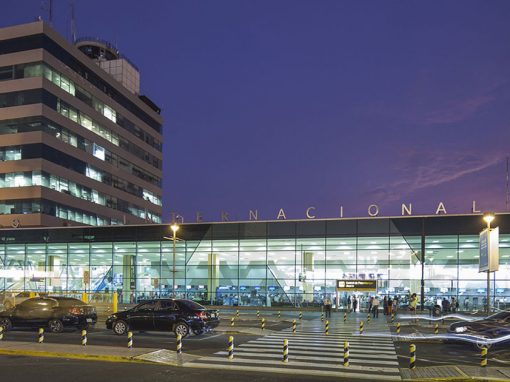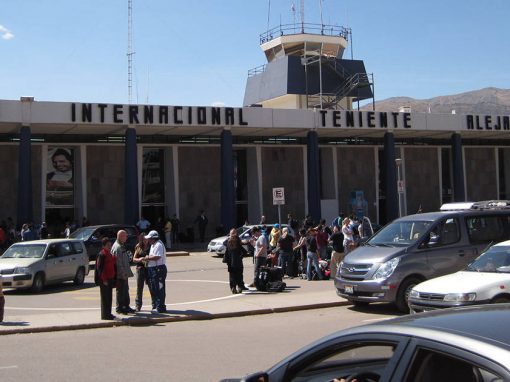Should you rent a car during your travels in Peru? If you have spoken to people who have driven in Peru, they may tell you that driving there is considered an extreme sport. Before you decide to rent a car, make sure that you reflect on the need for it. Renting a car can ensure that you have more flexibility and freedom during your travels, but keep in mind that driving a car in Peru, and particularly Lima, is probably more difficult than what you are used to!
Learn more about:
Last updated by Melissa Dreffs in June 2020.
Where to Rent a Car in Peru
It is possible to rent a car in Lima, Cusco, Arequipa, and Piura. If you decide that driving from Lima to Cusco is part of the adventure and wish to rent a car, some of the main car rental companies are:
- Alamo: Arequipa, Lima, Piura
- Avis: Lima
- Budget: Lima
- Enterprise: Arequipa, Lima, Piura
- Europcar: Arequipa, Cusco, Lima
- Hertz: Arequipa, Cusco, Lima
- National: Arequipa, Lima, Piura
- Sixt: Cusco, Lima
Above all, it is best to rent a car from one of the bigger international companies listed above. The cars tend to be better maintained and your price will be guaranteed. Travelers have reported unusual charges on their credit cards and being charged more than the agreed price with smaller companies. Either way, always make sure to read your contract carefully, including fine print, and keep an eye out for extra mileage, insurance costs, 18% sales tax, or other hidden charges.
In general, avoid picking up your rental car at the Lima airport. Lima’s traffic and roads are very challenging to drive on, even for the best drivers! So take a taxi to the hotel instead, and then make arrangements for the rental car. Some of the bigger rental companies will even bring your car straight to your hotel for an additional fee.

Photo by StockSnap on Pixabay.
How Much Do Car Rentals in Peru Cost?
Rent a small car for approximately $20-40 USD per day. Your best option is to choose a 4-wheel drive, especially if you are driving from Lima to Cusco and passing through the mountains. However, the car rental price for a truck or SUV costs approximately $50-70 USD per day.
Most rental estimates include basic insurance, but always read the fine print or check with your agent directly. However, this insurance covers very little and has a high deductible. If you are not accustomed to driving in Peru, it is recommended to upgrade your insurance directly with the rental agency. The cost to upgrade to higher levels of coverage is typically $30-50 USD per day.
When determining if a car rental in Peru is right for your trip, you’ll need to factor in the gas prices in Peru. The price of fuel is approximately $5 USD per gallon. Visa, MasterCard, and soles, the local currency, are the most common methods of payment. Gas stations across Peru are full service, with attendants pumping the gas. The attendants generally do not speak English, so basic knowledge of Spanish is necessary. It is recommended to tip the attendants around 50 centimos (about 20 cents USD). They are likely to check the tire pressure and clean the windows for tipping customers. Read more about tipping in Peru here.
While driving on main roads such as the Pan-American Highway, you will come across tolls. It is necessary to keep some small coins or bills on hand as credit cards are not accepted.
In remote areas of the country, phone service is very limited. Most long distance car rental companies rent a GPS system for approximately $5-10 USD per day. This is highly recommended if traversing through rural areas.
Most car rental companies rent car seats for approximately $5 USD per day. You should reserve the car seat at the same time you reserve the rental car.

Main highway in Lima. Photo by Serious Cat on Flickr.
Car Rental Rules
Car rental companies in Peru generally have rules dictating the areas where the rented car is permitted to drive. The rental agreement should specifically state any restrictions, such as only on paved roads, in certain regions, etc. You should make sure you check your car when you first receive it: note any dents or scratches. Also ensure you have your obligatory first-aid kit, and a spare tire that fits – just in case!
Many locals drive aggressively and do not follow the common rules of the road. In addition to the drivers, pedestrians also cross at any place, any time. It is common to see people walking between lanes at busy intersections or even highways selling drinks, ice cream, toys, etc.
There are no laws requiring children to use car seats, but all passengers under 12 must be in the back seat.
Always carry your drivers license, passport, and car rental agreement when driving a rental car. For further information, check out the travel and transportation section on the US State Department travel information page on Peru.

Transit officer in Lima. Photo by Randal Sheppard on Flickr.
Pros and cons of renting a car in Peru
If you are going cross-country, driving a rental car ensures you get a beautiful scenic trip and you will be able to appreciate the stunning landscapes at your own leisure. Furthermore, if you come across a place you like while driving, having your own car gives you the freedom to make unexpected stops. Most travelers will, however, tell you that traffic in Peru is difficult to get around in, especially in Lima, and that driving is not for the faint of heart! These are the pros and cons of renting a car in Peru.
Pros:
- Flexibility to explore on your own pace.
- Ability to stop on your own terms for food, restrooms, photos, etc.
Cons:
- There are long distances between main destinations. For example, driving from Lima to Cusco takes around 20 hours, whereas a direct flight takes just over one hour.
- The cost of flying or bussing between destinations is typically cheaper than renting a car in Peru.
- Many drivers in Peru are aggressive and do not follow rules of the road, causing high stress or safety concerns for those unaccustomed to the driving style.
- There is a lack of phone service in remote areas. Be sure to arrange a GPS ahead of time with your car rental company.
- Basic Spanish is needed for tolls and gas stations.
- Mountain roads are winding, narrow, and steep.
- High altitudes may cause altitude sickness for drivers and passengers if they are not yet acclimatized.
- Rural roads in poor conditions.

Traffic in Lima at night. Photo by AntoinePound on Flickr.
FAQs about car rentals in Peru
- Is it safe to drive in Peru? Driving in Peru tends to be a challenge for outsiders as common rules are not respected. Rural roads are not always well maintained, so getting off the beaten tourist trail may cause safety issues. Roads can become narrow and winding driving through the Andes Mountains, so it is best to have experience driving in similar situations beforehand.
- What is the minimum age to rent a car in Peru? To rent a car in Peru, the minimum required age of the driver is 21 years old. However, drivers under 25 should expect additional fees.
- How much does it cost to rent a car in Peru? A small car costs between $20-40 USD per day. See the Rates section above for estimated costs for insurance, gas, and other possible charges.
- Do I need an international driver’s license to rent a car in Peru? Driver’s licenses from other countries and generally valid for 6 months in Peru. Beyond 6 months, an international driver’s license is necessary for tourists. You will also need to have your passport on you while driving, as the date of the immigration stamp validates the use of a foreign license.
- Are rental cars automatic or manual/stick shift? Both options are available. While automatic cars may be easier for use in busy cities, manual cars are better equipped to handle the steep, winding roads in the mountains.
- Can I reach Machu Picchu by car? No, Machu Picchu is only accessible by train or foot.
- Can I cross international borders with a rental car from Peru? No, rental car companies in Peru do not allow drivers to take their vehicle out of the country.
Alternative Options
Getting a rental car in Peru is not the best or cheapest option for most travelers. Distances in Peru are lengthy, roads are not always in the best condition, and Peruvian drivers, although extremely skilled, tend to be quite aggressive. The US State Department warns against driving in Peru, especially on rural roads, alone, or late at night. Instead of renting your own car, you use alternate methods of transportation. Planes, buses, trains, and taxis connect the main destinations in Peru.
If you are traveling long distances through Peru in a short period of time, it is a good idea to fly. Flying is less risky, faster, and even cheaper than driving (once you calculate rental costs, gas, insurance and mileage).
Getting around Lima is easy with pre-arranged transportation or a taxi. This will save you from having to personally compete with other drivers. For in the moment transportation, the best option to find a taxi is through your hotel or use a ride sharing app like Uber, for example.

Uber app. Photo by Stock Catalog on Flickr.
Transportation to/from airports, bus and train stations is arranged ahead of time in all of our customizable Peru packages. Similarly, our guided tours all include pick up and drop off at your hotel. If flexibility is the main reason car rentals appeal to you, consider upgrading to private tours to have more flexibility in the tour start times and sites visited in cities across the country.
With many other methods of transportation connecting the main destinations, we do not recommend renting a car in Peru. Instead, contact our expert team to plan your trip for a seamless experience with all transportation included. No matter what option you choose, make sure to buckle up and just enjoy the ride!

Hendrika is Belgian but she considers herself a citizen of the world as she has lived in many different countries before moving to Peru. She fell in love with South America after her first visit to the continent in Bolivia, and has since then spent a lot of time traveling in the area. She especially enjoys Peru for its diversity, delicious food, and rich history.









